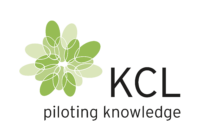Barrier coating for food packaging serves a crucial role in preserving food quality and extending shelf life. By providing a protective layer, it ensures that food products remain fresh and safe for consumption over a longer period.
What is barrier coating for food packaging?
Barrier coating refers to a thin layer applied to food packaging materials to create a protective shield against environmental factors. This coating is vital in preventing the transfer of gases, moisture, and other elements that could compromise the integrity and quality of food items. By doing so, barrier coatings help maintain the texture, flavor, and nutritional value of food products.
The importance of barrier coatings in food packaging cannot be overstated. They play a key role in extending the shelf life of products, reducing food waste, and ensuring that consumers receive safe and high-quality food. As part of the broader packaging technology landscape, these coatings are integral to the sustainability efforts within the bioeconomy.
How does barrier coating enhance food packaging?
Barrier coatings enhance food packaging through several mechanisms. One of the primary functions is moisture resistance, which prevents water vapor from penetrating the packaging and spoiling the contents. This is especially important for products like cereals and snacks, where moisture can lead to sogginess and spoilage.
Additionally, barrier coatings offer an oxygen barrier, crucial for products sensitive to oxidation, such as oils and nuts. By minimizing oxygen exposure, these coatings help in maintaining the freshness and nutritional quality of food. Furthermore, they provide protection against contamination, ensuring that external pollutants do not compromise the safety of the food.
What materials are used in barrier coatings for food packaging?
A variety of materials are employed in creating barrier coatings for food packaging. Traditional options include plastics and aluminum, which provide excellent barrier properties. However, the industry is increasingly moving towards more sustainable materials that align with environmental goals.
Biodegradable options, such as polylactic acid (PLA) and other biopolymers, are gaining popularity due to their reduced environmental impact. Recent innovations have also focused on developing coatings using natural substances like chitosan and proteins, which offer both effective barrier properties and enhanced sustainability.
What are the environmental impacts of barrier coatings?
The environmental impacts of barrier coatings are a significant consideration in their development and application. Recyclability is a crucial factor, as traditional barrier materials like certain plastics can be challenging to recycle, contributing to environmental pollution.
Eco-friendly materials, such as biodegradable polymers, are playing an increasingly important role in reducing the environmental footprint of food packaging. By utilizing sustainable materials and processes, the barrier coating industry is making strides towards minimizing waste and promoting a circular economy.
How is KCL advancing barrier coating technology?
At KCL, we are committed to advancing barrier coating technology through innovation and expertise. Our comprehensive laboratory services and unique piloting platform support the development of cutting-edge solutions tailored to the bioeconomy’s diverse value chains.
KCL’s contributions to barrier coating technology include the exploration of novel biomaterials and the integration of sustainable practices in our development processes. Our focus on confidentiality, expertise, flexibility, and high quality ensures that we remain at the forefront of industry advancements, providing our clients with the best possible solutions.
What are the future trends in barrier coatings for food packaging?
The future of barrier coatings in food packaging is poised for exciting developments. Technological advancements are expected to lead to even more effective and sustainable solutions, with a focus on reducing environmental impact and enhancing recyclability.
Consumer demands for eco-friendly packaging are driving innovation, with companies like KCL leading the way in developing advanced materials and technologies. Additionally, regulatory changes aimed at reducing plastic waste are likely to accelerate the shift towards biodegradable and recyclable barrier coatings, shaping the future of packaging technology.
